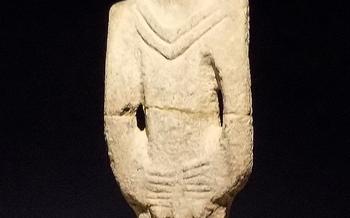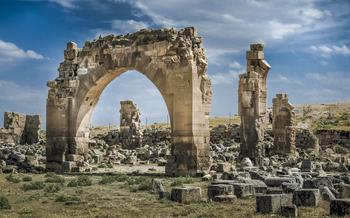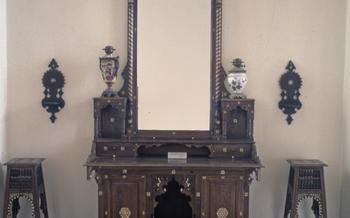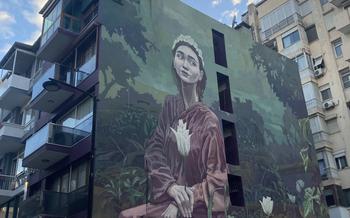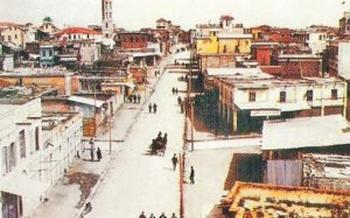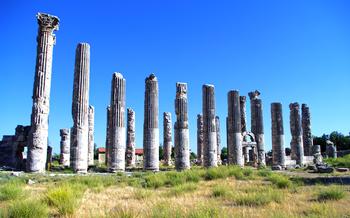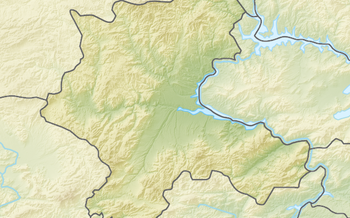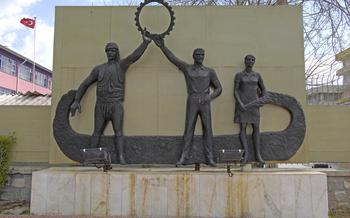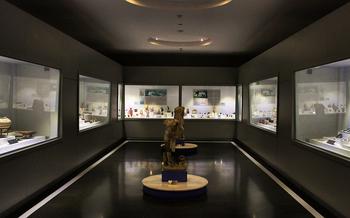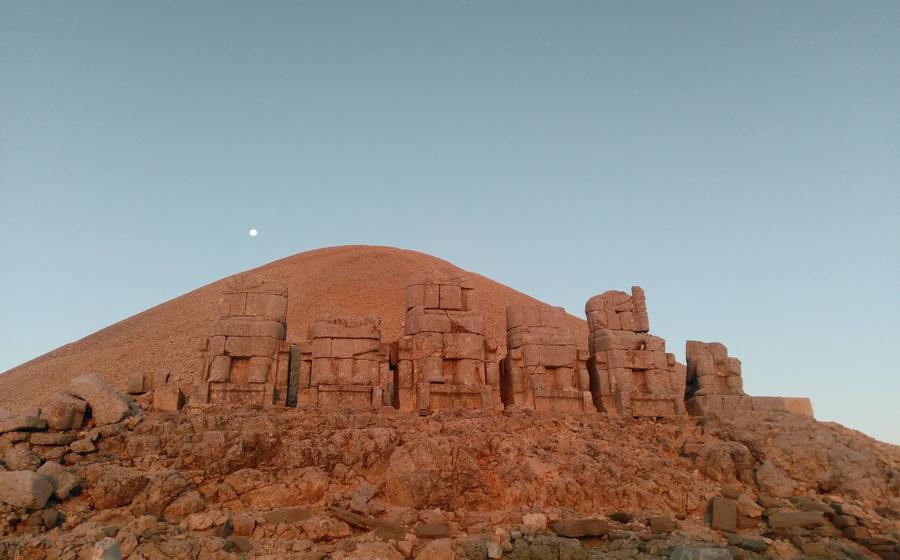
Mount Nemrut (Nemrut Dağı)
- Mount Nemrut: A Timeless Wonder
- Unraveling the history of Mount Nemrut
- Exploring the Terrace of the Gods
- The East Terrace: A Showcase of Ancient Art
- The West Terrace: A Realm of Lions and Eagles
- The Royal Tomb: An Enigma Unveiled
- The Tumulus: A Majestic Mound of Stones
- The Sacred Precinct: A Place of Rituals
- The Natural Beauty of Mount Nemrut
- Planning Your Visit to Mount Nemrut
- Accommodation and Dining Options
- Cultural Insights and Local Customs
- Photography and Social Media Tips
- Safety Precautions and Considerations
- Insider Tip: Exploring Beyond Mount Nemrut
Mount Nemrut: A Timeless Wonder
In the heart of southeastern Turkey, Mount Nemrut stands as a testament to the grandeur and artistry of ancient civilizations. This awe-inspiring mountain, with its unique location and rich history, has captivated the imaginations of travelers and historians alike. Recognized as a UNESCO World Heritage Site, Mount Nemrut offers a breathtaking spectacle of ancient ruins, stunning natural landscapes, and panoramic views that stretch for miles. Ascending to its summit, visitors are transported back in time to the era of the ancient Kingdom of Commagene, where King Antiochus I Theos built an extraordinary sanctuary and tomb complex that has stood the test of time.
Unraveling the history of Mount Nemrut
Nestled in the heart of southeastern Turkey, Mount Nemrut holds a profound historical significance, dating back to the ancient Kingdom of Commagene. This Hellenistic kingdom flourished under the reign of King Antiochus I Theos of Commagene, who ascended to the throne in 62 BC. Antiochus I, a visionary ruler with a deep appreciation for Greek and Persian cultures, embarked on an ambitious project to construct a monumental tomb and sanctuary atop the mountain.
The construction of Mount Nemrut epitomizes the rich cultural tapestry of the Commagene Kingdom, which seamlessly blended Hellenistic and Persian influences. Antiochus I, inspired by the grandeur of Greek and Persian architecture, commissioned the creation of colossal statues depicting Greek and Persian deities as well as intricate bas-reliefs narrating captivating mythological scenes.
The result is a mesmerizing spectacle that has stood the test of time, inviting visitors to delve into the fascinating history and cultural legacy of the Commagene Kingdom.
Exploring the Terrace of the Gods
As you ascend the grand processional way, your gaze is drawn to the impressive statues of Greek and Persian deities that line the path, each exuding an aura of majesty and reverence. These colossal figures, carved with remarkable precision and detail, depict the gods and goddesses of the ancient world, including Zeus, Apollo, Artemis, and Hercules.
Continuing your exploration, you will encounter intricate bas-reliefs adorning the terraces, depicting mythological scenes with captivating narratives. These exquisite carvings showcase the artistic prowess of the Commagenians, as well as their deep connection to the myths and legends of the ancient world.
From the terraces, you can also enjoy breathtaking panoramic views that extend for miles in every direction. The vast expanse of the Anatolian plains stretches out before you, with the majestic Taurus Mountains forming a dramatic backdrop to this awe-inspiring landscape.
The East Terrace: A Showcase of Ancient Art
The East Terrace of Mount Nemrut is a treasure trove of exquisitely carved sculptures, offering a glimpse into the artistic prowess of the ancient Commagenians. Here, visitors can marvel at the intricate details and expressions of the statues, which depict a pantheon of gods and goddesses from both Greek and Persian mythology.
Among the most notable sculptures is that of Antiochus I himself, depicted in a heroic pose and flanked by two eagles. The king's likeness is rendered with great realism, capturing his dignified demeanor and regal authority. Other deities represented on the terrace include Zeus, Apollo, and Mithras, each adorned with intricate details that highlight their divine attributes.
The bas-reliefs on the East Terrace further enhance its artistic significance. These intricately carved panels depict mythological scenes and symbolic imagery, providing insights into the beliefs and customs of the Commagene Kingdom. The stories depicted range from the heroic feats of Hercules to the celestial journey of the sun god, Helios.
Overall, the East Terrace serves as a testament to the artistic mastery of the ancient Commagene civilization. Its exquisite sculptures and bas-reliefs offer a glimpse into the rich cultural heritage of this region, showcasing the blending of Eastern and Western artistic influences that characterized the Commagene Kingdom.
The West Terrace: A Realm of Lions and Eagles
The West Terrace of Mount Nemrut stands as a testament to the power and artistry of the ancient Commagenians. Majestic lion statues, symbols of strength and protection, guard the entrance to this sacred precinct. Their stoic expressions and intricate details showcase the exceptional craftsmanship of the era.
Soaring eagle sculptures, representing power and strength, flank the lions, adding to the grandeur of the terrace. These majestic birds, with their outstretched wings and piercing gazes, seem to embody the spirit of the ancient Commagene Kingdom.
The West Terrace is adorned with mythological scenes and symbolic imagery, providing a glimpse into the beliefs and values of the Commagenians. These intricate carvings depict various gods and goddesses, each with their own unique attributes and significance. The representations of power and divinity on the terrace highlight the deep religious and cultural significance of Mount Nemrut.
The West Terrace seamlessly blends Eastern and Western artistic influences, creating a unique and captivating visual experience. The fusion of styles is evident in the sculptures' features, attire, and symbolism, showcasing the cultural diversity and cosmopolitan nature of the Commagene Kingdom.
The Royal Tomb: An Enigma Unveiled
The Royal Tomb, located atop Mount Nemrut, remains an enigmatic and captivating element of the site. Positioned at the summit, it stands as a testament to the grandeur and power of the Commagene Kingdom. The tomb's precise location and structure have been meticulously studied by archaeologists, who continue to unravel the mysteries surrounding its contents.
Theories and speculations abound regarding the occupants of the tomb. Some believe that it was intended as the final resting place of King Antiochus I Theos of Commagene, while others suggest that it may have been designed for multiple royal burials. Excavations and investigations are ongoing, and each new discovery sheds light on the history and significance of this ancient monument.
The mystery and intrigue surrounding the Royal Tomb have captured the imagination of travelers and historians alike. Its grandeur and enigmatic nature add to the allure of Mount Nemrut, making it a site that continues to inspire awe and fascination.
The Tumulus: A Majestic Mound of Stones
Standing tall and imposing atop Mount Nemrut is the awe-inspiring tumulus, a colossal mound of stones that serves as the focal point of the ancient sanctuary. Constructed with meticulous precision, the tumulus is a testament to the engineering prowess of the Commagene Kingdom. Its sheer size and scale are humbling, stretching over 150 meters in diameter and reaching a height of approximately 50 meters.
The tumulus is not merely a pile of rocks; it is a carefully designed and symbolic structure. Each stone was meticulously chosen and placed, forming a massive dome-like structure that resembles a natural mountain. This architectural marvel showcases the Commagenians' deep connection to the land and their reverence for nature.
The construction of the tumulus involved intricate techniques and a profound understanding of structural stability. The stones were carefully stacked without the use of mortar, relying solely on their weight and interlocking properties to maintain the integrity of the mound. This remarkable feat of engineering has stood the test of time, withstanding centuries of erosion and natural disasters.
The tumulus holds a profound significance within the Commagene Kingdom's religious beliefs. It was believed to be the final resting place of King Antiochus I Theos of Commagene, who was deified after his death. The mound symbolized the king's ascent to the heavens and his union with the divine realm. The tumulus, therefore, served as a sacred site where rituals and ceremonies were performed to honor the king and ensure his eternal well-being.
From an aerial perspective, the tumulus is a mesmerizing sight. Its circular shape and towering presence dominate the landscape, creating a striking contrast with the surrounding mountains. The interplay of light and shadow on the mound's surface adds to its grandeur, casting dramatic shadows that accentuate its monumental scale.
The tumulus on Mount Nemrut is not just a historical relic; it is a testament to the ingenuity, artistry, and religious beliefs of the ancient Commagenians. It invites visitors to contemplate the mysteries of the past, marvel at the achievements of ancient civilizations, and appreciate the enduring power of human ambition.
The Sacred Precinct: A Place of Rituals
At the foot of the Mount Nemrut tumulus lies the sacred precinct, a designated area for religious ceremonies and rituals conducted by the ancient Commagenians. This sacred space features an impressive array of altars, stelae, and other structures that once played significant roles in the religious practices of the kingdom.
The altars, built from large stone blocks, were used for offerings and sacrifices to the gods. These offerings, often consisting of animals or other valuable items, were believed to appease the deities and gain their favor. The stelae, tall stone slabs, were inscribed with religious texts and prayers, serving as a means of communication between the mortal realm and the divine.
The sacred precinct held immense religious significance for the Commagenians. It was a place where the royal family and the people gathered to perform rituals, seek divine guidance, and celebrate religious festivals. The presence of these structures indicates the deep reverence and devotion that the Commagenians had for their gods and their belief in the afterlife.
Exploring the sacred precinct offers a glimpse into the spiritual beliefs and practices of this ancient kingdom. Visitors can imagine the solemn ceremonies and rituals that once took place here, connecting with the past and gaining a deeper understanding of the religious traditions of the Commagene civilization.
The Natural Beauty of Mount Nemrut
Beyond its historical and cultural significance, Mount Nemrut also captivates visitors with its stunning natural beauty. The mountain's rugged landscapes, diverse flora and fauna, and breathtaking sunrises and sunsets create a harmonious blend of nature and history.
Stunning Mountain Landscapes
Mount Nemrut's unique geological formations and towering peaks offer a feast for the eyes. As you ascend the mountain, you'll be greeted by breathtaking views of rolling hills, deep valleys, and jagged cliffs. The contrasting colors of the rocks and the lush vegetation create a vibrant tapestry that changes with the seasons.
Diverse Flora and Fauna
Mount Nemrut is home to a rich and diverse ecosystem. The mountain's slopes are covered in a variety of wildflowers, including poppies, daisies, and tulips, which bloom in vibrant colors during the spring and summer months. The mountain also provides a habitat for various animal species, including birds, rabbits, and foxes.
Hiking Trails and Outdoor Activities
Mount Nemrut is a haven for outdoor enthusiasts. Several hiking trails wind through the mountain's diverse landscapes, offering trekkers the chance to explore its natural wonders up close. Visitors can also enjoy activities such as mountain biking, camping, and picnicking, allowing them to fully immerse themselves in the beauty of the surroundings.
Breathtaking Sunrises and Sunsets
One of the most magical experiences on Mount Nemrut is witnessing the sunrise or sunset from the summit. As the sun rises, the mountain's peaks and valleys are bathed in a warm golden glow, casting long shadows that create a dramatic effect. Similarly, during sunset, the sky transforms into a canvas of vibrant colors, creating a breathtaking spectacle that leaves visitors in awe.
Planning Your Visit to Mount Nemrut
To make the most of your visit to Mount Nemrut, careful planning is essential. The best time to visit is during spring or autumn when the weather is pleasant, and the roads are accessible. Summer months can be scorching, while winters bring heavy snowfall, making it challenging to reach the summit.
Transportation options to Mount Nemrut include public buses from nearby cities like Malatya and Adiyaman. However, renting a car or joining a guided tour offers more flexibility and allows you to explore the region at your own pace. Guided tours often provide valuable insights and historical context, enhancing your understanding of the site.
Once at Mount Nemrut, facilities and amenities are limited. Wear comfortable shoes for walking on uneven terrain, and bring essentials like water, sunscreen, and a hat. There are no restaurants or cafes on the mountain, so pack a picnic lunch or snacks to enjoy during your visit.
To fully appreciate the grandeur of Mount Nemrut, allocate sufficient time for your visit. Plan to spend at least a few hours exploring the terraces, the tumulus, and the sacred precinct. Allow ample time to wander, take photographs, and soak in the breathtaking views.
Accommodation and Dining Options
When planning your visit to Mount Nemrut, you'll find a range of accommodation options to suit different budgets and preferences. In the nearby town of Kahta, there are hotels and guesthouses offering comfortable stays with modern amenities. For a more immersive experience, consider staying in a traditional Turkish guesthouse, where you can enjoy local hospitality and authentic cuisine.
For dining options, you'll find local restaurants in Kahta serving traditional Turkish dishes, including delicious kebabs, pide (Turkish flatbread), and meze platters. Many restaurants offer outdoor seating, allowing you to savor your meal while enjoying the fresh mountain air and stunning views. If you prefer a picnic amidst nature, designated picnic areas are available near Mount Nemrut, where you can enjoy your packed lunch while surrounded by breathtaking scenery.
Cultural Insights and Local Customs
When visiting Mount Nemrut, it is essential to respect the local traditions and customs. The people of Malatya are known for their warm hospitality and welcoming nature, but it is important to be mindful of their cultural values and practices. Dress modestly and avoid wearing revealing clothing, especially when visiting religious sites or conservative areas. When interacting with locals, be polite and respectful, and try to learn a few basic Turkish phrases to show your appreciation for their culture. Language barriers can be a challenge, but many locals are eager to help and may be willing to assist you with translation or directions. Respect private property and avoid entering restricted areas without permission. By observing local customs and showing respect for the community, you will enhance your experience and create positive connections with the people of Malatya.
Photography and Social Media Tips
Capture the grandeur and beauty of Mount Nemrut through stunning photographs. Bring a good camera with a wide-angle lens to capture the vast landscapes and intricate details of the statues. Use a tripod for stability, especially during low-light conditions. Experiment with different angles and perspectives to create unique and captivating shots. Don't forget to play with the natural light, especially during sunrise and sunset, to add drama and warmth to your images.
Share your Mount Nemrut experiences with the world on social media. Use relevant hashtags like #MountNemrut, #Turkey, and #UNESCO to reach a wider audience. Tag your location and mention @unesco or @goturkiye to get featured on their official pages. Share interesting facts and anecdotes about the site to engage your followers and provide valuable information. Your social media posts can inspire others to visit this incredible destination and appreciate its historical and cultural significance.
Safety Precautions and Considerations
Venturing into the realm of Mount Nemrut requires careful consideration of safety precautions. The unpredictable weather conditions demand preparedness for sudden changes, including rain gear and warm layers. Sturdy footwear is essential for navigating the uneven terrain, while sun protection and hydration are paramount to combat the intense sunlight and prevent dehydration.
Wildlife encounters are a possibility, particularly with foxes and mountain goats roaming the area. Maintaining a respectful distance and avoiding any attempts to feed or approach them is crucial. Solo travelers should exercise extra caution, informing someone of their itinerary and maintaining regular communication. Emergency contacts and local assistance numbers should be readily accessible.
Despite its popularity, Mount Nemrut remains a remote destination, and visitors should be self-sufficient. Carrying a first-aid kit, basic supplies, and a fully charged mobile phone is recommended. Respecting the natural environment and leaving no trace is essential to preserve the pristine beauty of the site.
Insider Tip: Exploring Beyond Mount Nemrut
While Mount Nemrut stands as the crown jewel of the region, there are many other hidden gems waiting to be discovered in the vicinity. History buffs can delve into the ancient city of Arsameia, the former capital of the Kingdom of Commagene, where ruins, sculptures, and inscriptions await exploration. Nature enthusiasts can embark on scenic hiking trails that traverse lush forests, cascading waterfalls, and panoramic vistas.
Venture off the beaten path to the nearby village of Karadut, renowned for its traditional craftsmanship and local delicacies. Immerse yourself in the vibrant atmosphere of the weekly market, where you can barter for handmade carpets, jewelry, and pottery while savoring the flavors of regional cuisine.
For a truly unique experience, consider venturing further afield to the stunning Lake Hazar, a serene oasis nestled amidst towering mountains. Embark on a tranquil boat ride, marvel at the diverse birdlife, and soak in the tranquility of this natural paradise.
Whether you seek historical wonders, natural beauty, or authentic cultural experiences, the region surrounding Mount Nemrut offers an abundance of hidden treasures waiting to be unearthed. Embrace the spirit of adventure and let curiosity guide your footsteps as you explore this captivating corner of Turkey.
